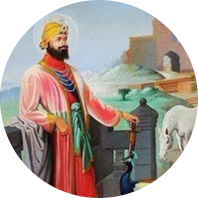Sikhism was established by ten Gurus, divine spiritual messengers or masters, over the period from 1469 to 1708 – that is, over a period of 239 years. These teachers were enlightened souls whose main purpose in life was the spiritual and moral well-being of the masses. By setting an exceptional example of how to live a holy and worthy life through practising righteous principles of living their human lives, they sort to awaken the higher conciousness in the human race. The Gurus taught the people of India and beyond, to live spiritually fulfilling lives with dignity, freedom and honour.

GURU NANAK DEV JI
Born in 1469 to a Hindu family near the city of Lahore (now a part of Pakistan), Guru Nanak was the founder of Sikhism. The young Nanak enjoyed the company of holy men and engaged them in long discussions about the nature of God. Around the year 1500, Nanak had a revelation from God; and shortly thereafter, he uttered the words:GURU ANGAD JI
Besides maintaining and upholding the traditions laid forth by Guru Nanak, the second Guru created the Gurmukhi script, a medium through which the writings and teachings of the Sikh gurus could be readily understood by their followers. By disassociating the Sikh tradition from Sanskrit influence, a script and language largely unknown to the masses, the Guru emphasized the universality and widespread accessibility of Sikh religious thought. Moreover, it solidified the idea that Sikhism started as a distinct and revealed religion.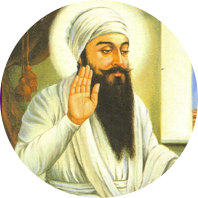
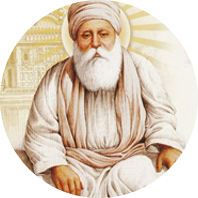
GURU AMAR DAS JI
The third Sikh Guru reinforced the teachings of the previous Gurus by organizing the construction of twenty-two centers of religious learning for the Sikhs. Like his predecessors, he sharply criticized the practice of sati, where widows immolated themselves on the funeral pyres of their dead husbands. The Guru also required that anyone wishing to meet him would have to first partake in the common kitchen, called Langar, as a sign of equality. The Emperor Akbar, Muslim ruler of India, himself followed this tradition before meeting with the Guru.GURU RAM DAS JI
Founder of the city of Amritsar, site of the Golden Temple, Guru Ram Das worked to ensure the city’s growth by encouraging commercial and trade ventures in the town. Soon, with the city flourishing as a trade center and place of pilgrimage, the Sikhs had a distinct religious center of their own.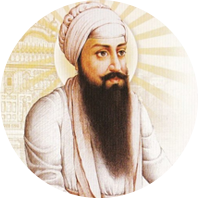
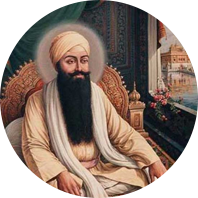
GURU ARJAN DEV JI
The fifth Guru started the construction of the Golden Temple. To emphasize the universality of Sikhism, the foundation stone of the shrine was laid by a Muslim saint, named Mian Mir. Also, the temple featured four entrances to represent access to all communities. Guru Arjan compiled the Adi Granth, the Sikh scripture containing the writings of all the Gurus up until that time (the writings of the eighth Guru were added by Guru Gobind Singh). As another sign of the universality of Sikh philosophy, the Guru added the writings of several Muslim and Hindu saints, whose ideas corresponded to Sikh beliefs. With the passage of time, the Guru attracted a substantial following; and therefore, the Sikh community assumed a socio-political character. In 1606, Emperor Jehangir, the Muslim ruler of India, summoned the Guru to his court on the charge of blessing a rebellious relative of the Emperor’s. Upon the Guru’s refusal to embrace Islam to escape death, the fifth prophet of the Sikh religion was subject to inhumane torture and killed. Thus, the martyrdom tradition of Sikhism began with the martyrdom of the Guru himself. From this point forward, Sikhism began to form itself into a community of saint-soldiers.GURU HAR GOBIND SINGH JI
Responsible for establishing idea of the inseparability of spiritual and temporal matters, the sixth Guru maintained an army for the purpose of protecting the poor and destroying tyrants. He constructed the Akal Takht, center of temporal affairs in the Sikh religion, across from the Golden Temple in Amritsar. By this time, the Sikh community was a full-fledged social, religious, and political entity.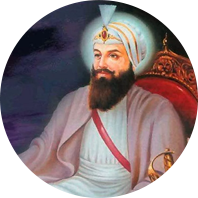

GURU HAR RAI JI
The seventh Guru continued the mission of organizing the Sikhs into a military force that would be equipped and ready, both spiritually and physically, to counter the repressive Mughal empire.GURU HAR KRISHAN JI
At only five years of age, the eighth Sikh Guru was the youngest. He worked to alleviate the suffering of the common man during a smallpox epidemic in Delhi, but succumbed to the disease himself at the age of eight.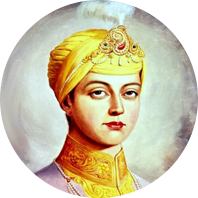
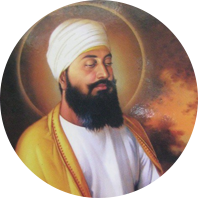
GURU TEGH BAHADUR JI
The Mughal Emperor of India, Aurangzeb, attempted to consolidate India into one Islamic nation. In order to achieve this aim, he set out to virtually eliminate Hinduism from India. When the eighth Guru heard of this from a desperate group of Hindus, he challenged the Emperor that, in order to convert all the Hindus, the Guru himself would have to embrace Islam. When the Guru was imprisoned at the request of Aurangzeb in 1675, despite being forced to watch the torture and execution of two disciples, the Guru simply refused to concede to the Emperor’s demand. Finally, the Guru was ordered to get beheaded. Unparalleled in the history of humankind, the martyrdom of Guru Teg Bahadur was an act of sacrifice for another religious community. The Guru’s martyrdom served to awaken the collective conscience of the Sikh community, which was about to undergo a final transformation in the years to follow.GURU GOBIND SINGH JI
Upon the death of his father, Guru Gobind Singh felt compelled to organize the Sikhs into a community of saint-soldiers. During the spring of 1699, the Guru called his followers for a special gathering. During the day, thousands of people assembled in front of a stage and a tent, out of which emerged the Guru to address the massive audience. With sword in hand, the Guru asked the congregation if anyone would be willing to sacrifice their head for him. Naturally, the audience was stunned by the Guru’s request, and many followers began to disperse out of sheer terror. Still, the Guru pressed for one of his followers to give their life for him. Finally, one of the assembled stood, with hands folded, and approached the Guru in full submission. The lone disciple was led into the tent by the Guru. After some time, the Guru emerged with a blood-stained sword and asked for another head. Overcome with shock, the audience could not believe what they were seeing; however, another devoted follower stood and offered his head to the Guru. Eventually, with the same outcome, three more devoted disciples offered their lives to the Guru. After the fifth devotee was led into the tent, to the surprise of the massive audience, the Guru emerged with the five followers fully clothed in the uniform of the Khalsa, or Pure. The Guru’s demonstration symbolized a revitalization of the Sikh identity and the definitive evolution of the Sikh community into a community of saint-soldiers. After initiating the five “beloved ones” into the new order of the Khalsa, the Guru knelt before them and requested that they initiate him. In the annals of human history, such a transformation into a distinct and solidified community, culminating in the baptism of the prophet by his followers, remains a unique and defining moment.